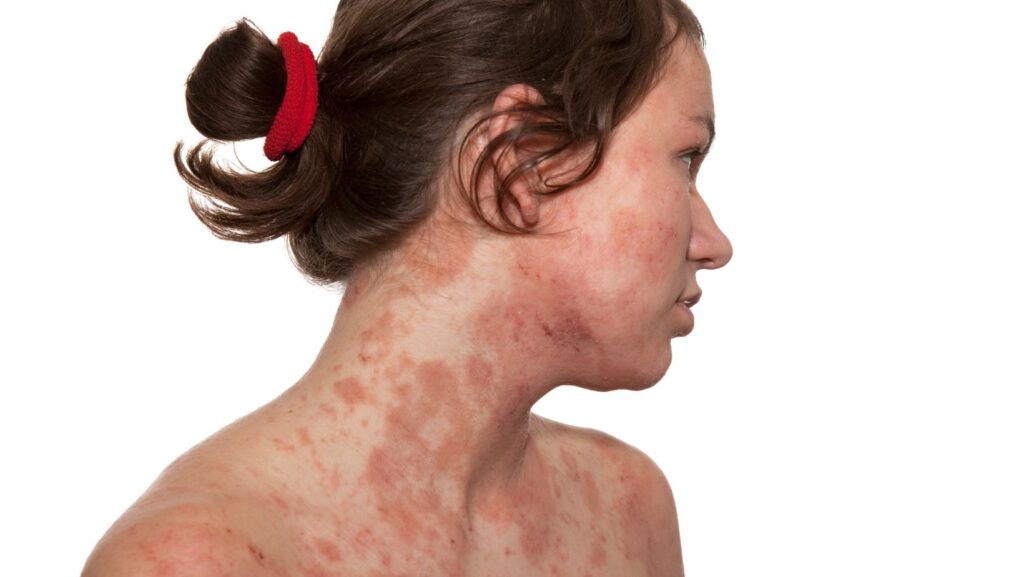When my son developed red, itchy patches on his skin at age two, I felt overwhelmed and confused. The pediatrician diagnosed it as eczema, but the journey to managing it effectively took months of trial and error.
Parents of children with eczema often struggle to find reliable information about what triggers flare-ups and which treatments actually work. Every child’s skin responds differently, and what helps one child might irritate another.
Navigating the world of childhood eczema involves more than just applying medication. It requires understanding triggers, establishing skincare routines, and sometimes making lifestyle changes that benefit the whole family.
Understanding Childhood Eczema
Childhood eczema affects nearly 20% of children, causing red, itchy, and inflamed skin that can significantly impact daily life. Proper understanding of this condition helps parents create effective management strategies that address both physical symptoms and emotional wellbeing.
The Basics of Eczema in Children
Eczema, also known as atopic dermatitis, is a chronic inflammatory skin condition characterized by dry, itchy patches. It typically appears on the face, neck, hands, and in skin folds like elbows and knees.
The condition often develops before age 5, with many children showing symptoms as early as 6 months. While some children outgrow eczema by adolescence, others manage it throughout their lives.

Eczema has a strong genetic component. Children with a parent who has eczema, asthma, or allergies face higher risk of developing the condition.
The skin barrier dysfunction in eczema allows moisture to escape and irritants to enter, creating the cycle of dryness, irritation, and inflammation that defines the condition.
Common Triggers and Environmental Factors
Identifying triggers is crucial for treating childhood eczema effectively. Common triggers include:
Environmental factors:
- Harsh soaps and detergents
- Synthetic fabrics
- Extreme temperatures
- Low humidity
- Dust mites
Food sensitivities: Dairy, eggs, nuts, and wheat may trigger flares in some children, though food allergies aren’t the primary cause of eczema for most.
Seasonal changes often worsen symptoms, particularly during winter when indoor heating reduces humidity. Summer can also pose challenges due to sweat, chlorine, and increased pollen.
Keeping a symptom journal helps track potential triggers and recognize patterns in flare-ups.
The Psychological Impact of Eczema
The visible nature of eczema can affect a child’s self-esteem and social interactions. Children may feel self-conscious about their appearance or face questions from peers about their skin.
Sleep disruption from itching and discomfort can lead to irritability, difficulty concentrating, and behavioral issues. Studies show children with severe eczema lose an average of 1-2 hours of sleep per night.
Parents should address both physical and emotional aspects of the condition. Open conversations about feelings and coping strategies help children develop resilience.
School involvement is important. Educating teachers about the condition and creating an action plan for flare-ups helps children feel supported throughout their day.
Strategies for Management and Treatment
Managing childhood eczema requires a consistent approach that combines daily skincare, appropriate medical treatments, and lifestyle adjustments. These strategies work together to reduce flare-ups and help children live more comfortably with this condition.
Daily Skincare Routines
A gentle but effective skincare routine forms the foundation of eczema management. Children should bathe in lukewarm water for 5-10 minutes using mild, fragrance-free cleansers specifically formulated for sensitive skin.

Pat the skin dry instead of rubbing, leaving it slightly damp. Apply moisturizer within 3 minutes after bathing to lock in moisture. This “soak and seal” method helps maintain the skin barrier.
Recommended moisturizers:
- Petroleum jelly (Vaseline)
- Ceramide-containing creams
- Colloidal oatmeal formulations
- Hypoallergenic ointments and creams
Moisturize at least twice daily, focusing on problem areas. For severe cases, wet wrap therapy may help. This involves applying medication or moisturizer and covering with damp bandages overnight.
Medical Treatments and When to Consider Them
When regular moisturizing isn’t enough, medical treatments become necessary. Topical corticosteroids reduce inflammation and itching during flare-ups. These medications come in different strengths, from mild (1% hydrocortisone) to more potent options.
Non-steroidal alternatives include topical calcineurin inhibitors like tacrolimus and pimecrolimus. These are particularly useful for sensitive areas like the face and neck.
Parents should consult a pediatrician or dermatologist when:
- The skin shows signs of infection (yellowish crusts, increased pain)
- Eczema significantly disrupts sleep or daily activities
- Over-the-counter treatments aren’t effective
- Flare-ups are frequent or severe
For difficult cases, phototherapy or oral medications might be recommended, but these require careful medical supervision and aren’t first-line treatments for children.
Lifestyle Adjustments for Eczema Relief
Environmental factors play a crucial role in eczema management. Identifying and avoiding triggers can significantly reduce flare-ups.
Common triggers to minimize:
- Harsh soaps and detergents
- Synthetic fabrics (choose 100% cotton instead)
- Dust mites and pet dander
- Extreme temperatures and sweating
Maintain indoor humidity between 45-55% using a humidifier in dry weather. Dress children in loose-fitting, cotton clothing and remove tags that might irritate the skin.
Keep fingernails short to minimize damage from scratching. During sleep, light cotton gloves can prevent unconscious scratching.
Diet modifications may help some children, particularly if food allergies are suspected. Common culprits include dairy, eggs, nuts, and wheat, but elimination diets should only be attempted under medical supervision.


